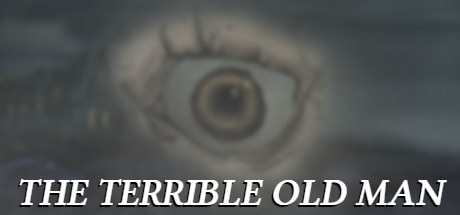Steam Sub 163144 CD Key: 17 March 2017 – 00:06:11 UTC: 163145: Sumatra for Beta Testing CD Key: 17 March 2017 – 00:06:11 UTC: 163146: Sumatra: Fate of Yandi Store or CD Key: 14 December 2020 – 18:00:41 UTC: 364947: Sumatra: Fate of Yandi ( 610900 ) - complimentary reviewer package No Cost: 11 May 2019 – 12:30:25 UTC. May 14, 2019 Sumatra: Fate of Yandi is an adventure game, released in 2019 by Cloak and Dagger Games. Sumatra: Fate of Yandi has a Stylized art style and uses a Point-and-click control scheme. Adventure Gamers have published a review of Sumatra: Fate of Yandi and rate it as Very good, meanwhile the community rating for Sumatra: Fate of Yandi is Very good. PDF One of the challenges in exploration drilling activities in the geothermal field is that the local communities have not been educated on the. Find, read and cite all the research you. You have completed Sumatra: Fate of Yandi. May 14, 2019 Current Price. Share ©2006-2020 Exophase.com Created by Mike Bendel Design by Xamantu. Sumatra: Fate of Yandi is a traditional point and click adventure that tells the story of Yandi, a logging worker who gets caught up in a terrible landslide, leaving him lost and alone deep in the jungle. Join him on his quest to find his best friend and coworker Ramdan, and return home to his beloved partner Adiratna.


They look rather different from the white rhinos we have in Dublin; their large folds of skin overlap like a suit of armour.
The two Warsovians were unusually lively when I saw them last week, one ran around like a pony, kicking up dust and, literally, letting off steam in the bracing Polish air. Baby white rhinos play like this, but I have never seen an adult do so. Whether this was normal Indian rhino behaviour or just once-off exuberance, I can’t say.
The world’s second largest land animal is in the news for all the wrong reasons. Contrary to popular belief, Chinese medicine doesn’t regard rhino horn as an aphrodisiac but it’s used to reduce fever. With the huge demand for it from newly affluent China, a kilo of horn fetches tens of thousands on the black market. Poaching is rife. Even museums and zoos aren’t safe. Their collections are being targeted by criminal gangs. Horn specimens must be secured in safes and vaults.
Sumatra: Fate Of Yandi Coming May 14th To Steam Mop
On October 25, a Vietnamese conservation group confirmed that poachers had killed the country’s last rhino. Its horn had been cut off and sold on the black market. The extinction in Vietnam is particularly poignant. Against all the odds, this shy animal survived the bombing, defoliation and destruction of forests during ‘the American war’.
Vietnam’s rhinos were of the Javan species, one of the rarest mammals in the world. Nor is poaching confined to Asia; the International Union for the Conservation of Nature claims that African rhinos are facing their worst onslaught in decades.
These tanks of the animal kingdom, like their distant cousins the horses and tapirs, belong to the ‘odd-toed’ group of ungulates and were, perhaps, losing out in the evolutionary rat-race long before we began adding to their problems. ‘Keep it simple, stupid’ could be the rhino’s motto. Its brain is relatively small for such a huge animal and the eyesight is poor. Skin, up to 5cm thick, is a main line of defence. The digestive system, too, is uncomplicated. The animal’s large size allows food to be retained in the gut for several days, most of the digesting being done towards the rear end. This helps the rhino exploit tough fibres, but it’s a limited approach. When gut bacteria die, they are passed in the dung, a waste of valuable energy.
The other great group of ungulates, the ‘even-toed’ to which cattle sheep and deer belong, have multi-chambered stomachs. A cow spends hours chewing cud, already treated in its rumen, before sending it on to the next stomach chamber. When the bacteria carrying out the fermentation die, their bodies are absorbed in the intestines rather than wasted as dung. The members of the even-toed brigade, therefore, seem better equipped than their odd-toed cousins so, perhaps, it’s not surprising that only five rhino species remain. Three of them are critically endangered.
Africa has two species. Thanks to rigorous protection in South Africa, there are 14,000 white rhinos alive today. However, only six adults of the northern subspecies survive, four at Dvur Krávolé Zoo in the Czech Republic and two in San Diego Zoo. Four zoo-bred calves were released in Kenya where it’s hoped they will breed.
The other African species, the black rhino, is not faring too well. Its population has fallen from 70,000 animals in the 1950’s to 2,500 now.

Sumatra: Fate Of Yandi Coming May 14th To Steam Air
The outlook is even bleaker in Asia, the continent in which rhinos are thought to have evolved originally. The Indian one-horned species is confined to a few protected areas. Two thirds of the world’s population live in Assam’s Kaziranga National Park, which is supported by Dublin Zoo.
Sumatra: Fate Of Yandi Coming May 14th To Steam Skin
The Sumatran rhino, the smallest and hairiest of the family, is elusive and virtually impossible to observe, as I found when visiting the Tabin rainforest, one of the few Bornean haunts, last year. There may be less than 300 left in Borneo and Sumatra.
Now that the Vietnamese animals are gone, only 50 or so Javan rhinos remain. It’s one of most threatened of mammals.